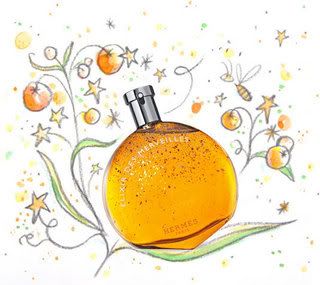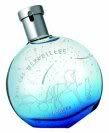
Medieval blends included herbs and balms of various sources, once of which was melissa officinalis. Paracelsus called this herb "the elixir of life", and combined it with carbonate of potash in Primum Ens Melissae, a mysterious alloy.
It is also recorded that one of Louis XIV's physicians, named Lesebure, tried the brew on an elderly chicken, which within a few days lost its tattered plumage, grew fresh feathers and started to lay eggs again. He had earlier tried it, bearing dramatic results once more, on two old servants, but the experiment never was completed for reasons not mentioned (we can imagine the distaste of servants however!)
Another of Paracelsus's elixirs, the Primum Ens Sanquinis, involved human blood and Alcahest, a universal healer which is based on caustic lime, alcohol and carbonate of potash. Gerard proclaimed melissa "comforteth the hart and driveth away all sadnesse," and it was a favorite in medieval "elixirs of youth". The alchemist Paracelsus made a preparation called Primum ens melissae, and even in the 18th century, it was still thought to "renew youth."
As an aside an interesting portal page for anyone interested about elixirs is this one , while there are also some arabic recipes that sound very good.
To the detriment of many perfume companies, I am sure, Clinique first had the hindsight to copyright this alluring and desired name for its aromacologicalAromatics Elixir perfume, back in 1972; a move that proved a masterstoke, as the mysterious patchouli chypre has captivated audiences in its dramatic sillage and mystery making it an enduring bestseller.
Elixir des Merveilles by Hermès is the flanker fragance to the established Eau de Merveilles by the venerable house.
Not to be confused with Parfum des Merveilles which preceded it last year, this one adds a gourmand touch to the original composition which was created by perfumers Ralf Schwieger and Nathalie Feisthauer in 2004.

Parfum des Merveilles is a denser, more lasting presentation that came out in 2005, encased in the same smashing bottle on a tilt, done in metal, that adds notes of oak, patchouli, mosses, amber, balsam of Peru, davana, leaves and roots and an intriguing cognac note.

In an effort to put a completely different spin on the original jus nez extraordinaire Jean Claude Ellena, resident perfumer in Hermès for quite a while now, has added the succulent orange peel and tonka bean notes which culminate in the most discreet chocolate effect. The combination of orange and chocolate has been a favourite of mine and was until now to be indulged in Fendi's now discontinued Theorema. Naturally, as soon as they saw this was a decent jus they simply had to pull it off the market. Wouldn't want to spoil us with something really good, I guess! Imagine, we could get accustomed to real taste! Oh, the unthinkable!
The Ellena school of perfumery is veering towards the salty and bitter, with a transparent gossamer-thin elegance that is unmistakable and trully classy. However the restraint for which minimalist Ellena is famous for manifests itself in this one, making for a brew that is mouthwatering yet never too sweet or childishly foody. He showcased his ability for accomplishing just that in another sweet yet transparent creation for Frederic Malle, the heliotropin-laced fluffy powdery cloud of Eau d'Hiver. He also put his hand in the creation of an inexpensive yet great vanilla perfume of all things (I know, it sounds impobable for him, but there you have it), Vanille Sublime by Lily Prune.
Candied orange brings to mind Mandarine Mandarin by Lutens or his La Myrrh, both from the exclusive Palais royal collection, but this formula has less of the deep sweetness and tartness of either. The first hit of the spray is quite sweet, yet it dissipates as soon as the alcohol content evaporates and the unfolding of the heart takes it into the gourmand woody territory. The base note of the original, which allegedly includes one of the last batches of real ambergris (as Hermès was quick to pick one of the rare batches of this wonderful material ) intermingles with its salty disposition into a garland of softly woody and powdery resinous notes, of which tonka bean is mostly discernible. It leaves a slightly powdery aura that is very seductive and the whole remains subtle and alluring, never intruding.
"For me, ambergris is a magical material," Givaudan's perfumer Ralf Schwieger explained to Woman's Wear Daily back in 2004 when the original Eau de Merveilles launched, adding that it reminds him of the biblical tale of Jonah and the whale, when the prophet was swallowed alive, to be miraculously released after some days.
"Ambergris has so many facets -- ambery, woody, dark, a salty-sweet concoction with [notes of] ink and tobacco. My idea was to re-create it in my way," he went on. In Elixir des Merveilles, the great attributes of ambergris are laced with complimentary notes that have the weird effect that a serving of chocolate M&Ms eaten with a hadnful of salty pop-corn would. Or caramel biscotti dipped into Hershey's chocolate syrup with its unmistakable salty aftertaste. Savoury and delicious, although it sounds unlikely at first. By now you must be thinking that I am a weird eater with some twisted tastes, but I assure you that food (and perfume) experimentation never hurt anyone. This is a likeable perfume and very fit for winter.
The official notes include: Orange Peel, , caramel, biscuit accord (vanilla, tonka bean, milk), sandalwood, incense, resins: Peru balsam and balsam of Siam, oak, patchouli, cedar and ambergris.
Available from major department stores.
Elixir des merveilles comes in an Eau de Parfum bottle of 50ml/1.7ozand 100ml/3.4oz coloured deep orange, a colour close to that which is inextricably tied in our minds with the trademark Hermès boxes and paper bags.
Top pic comes from the official site of Hermès, other two from Osmoz.
.jpg)





.jpg)
The more I read about it the more I love this fragrance.
ReplyDeleteHow do you know about this amber batch Hermes bought you keep talking about? I wonder for how long will it last and if it's mart to buy more juice in the parfum concentration now?
Do all concentrations have real amber in them?
I know you can't tell for sure, but what do you think?
This is what they claimed in their press material and it had circulated for very long. I am not in a position to know for sure, although one source tells me that EdM does not contain real ambergris (they keep it for the parfum concentrations, anyway, in the house's scents) and comparing with my own tincture I am not 100% conveinced either.
ReplyDeleteI think panic purchases might not be advised just yet. :-)